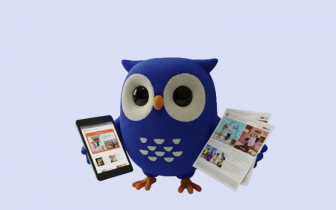What Is Brand Storytelling and Why Should You Use It?

Why is everybody praising brand storytelling nowadays? Why do companies try to make it a part of their marketing strategy? The answer is simple. With storytelling, a brand can make a huge step forward.
But what is this step all about? Where will it lead your company? Well, it drives you closer to your customers. And, after all, customers are those who make your brand complete. They support it, they make purchases, they tell about it, and they become its advocates.
Though brand storytelling is an amazing opportunity to present your brand more humanly, it's not the easiest task to do. Yet, you need to do your best to compel an appealing story.
According to research, stories are the most memorable type of content. Moreover, 55% of customers are more likely to purchase the product in the future if they love your brand's story. 44% of them will share your story, and 15% of users will purchase the goods immediately.
That's a worthy reason to use this strategy to grow your brand. Today, we will tell you more about brand storytelling, its main elements and inspire you with some great examples.
What is brand storytelling?
There are numerous approaches to the brand storytelling definition. In a nutshell, we can say that brand storytelling uses original and unique stories aimed to grow and strengthen customers' loyalty or attract new clients.
But let's be fair, there are a lot more flavors to this term.
That's why let's check another definition and learn its anatomy in more detail.
Brand storytelling is employing a narrative to connect your brand to clients, focusing on combining what you stand for and the values you share with your clients.
This definition has three main elements you should pay attention to. They are - narrative, what you stand for, and values. These elements should become an integral part of your story. So, what are they?
Narrative
Well, brand storytelling is about telling stories. You can respond to us: "It's obvious." It is, for sure. Yet you should refer to this type of content as a literature component. That's why your story's narrative should have characters, plot, conflict, rising action, and a catastrophe.
What you stand for
That's the core of your brand. It's not about the goods or services you sell. It's about your purpose and ideas that stand behind your brand. It's something intangible that has made you create your company in the first place.
Values
Values are a pretty all-embracing notion. It's what your company retranslates - starting from its founder and ending with its workers. What's important is that the company's values should correlate with the customers’/community's values.
The main thing you have to remember is that brand storytelling is much more than your products. Accordingly, a story you share is not a selling text. It's neither a copy full of dewless data.
Try to create something human, something that your customer can relate to. Think about how and why your company has started, your pitfalls, and how you have solved them, your mission as a brand, etc.
Finding your brand's purpose and telling a story about it
Be it brand storytelling on social media or your site's blog - one thing should unite them. That is your brand purpose.
In the previous point, we've shown that purpose or value(s) is the core of brand storytelling. Respectively, you should overbuild your story around the purpose, not the goods.
Leave a description of your product's benefits and features for marketing texts. Your goal is to gather customers and the community around your values. You have to create something that makes people want to become a part of your brand. Some great stories or values people can relate to and find familiar and appealing.
We can divide a brand's purpose into four values:
- Values you stand for,
- Values that make your brand,
- Values about what you do for customers/community,
- Values about the causes that are important to you.
These values will serve as a connector between you and your customers. They will help you stand out from your competitors as you won't be another faceless brand. Your brand's purpose will de-veil your story, show who stands behind the brand and make it more human.
Your brand should inspire and empower people; it should make them feel special and give them a reason to belong. And that's possible after you find your company's purpose, create a story out of it, and pass it to your customers.
So, what does make a successful narrative? According to Marshall Ganz, there are three parts of the public narrative:
Stories of self
Everybody has a story to tell. That refers to companies too. In fact, you allow customers to know some deeper information about your brand. Tell about the ups and downs you have experienced and how you’ve solved them. Show how you have evolved and established your company as a brand. Expose the things that have formed your values.
Stories of us
This element extends the narrative. Now it's time to make your brand more human. This way, you can share your founder's story and why he/she has started this business in the first place. Tell stories about people who work for your company, your brand's ambassadors, or loyal customers.
Stories of now
This type of narrative urges action. Basically, you tell customers about the activities that require some actions. So, it's about choices your customers can make. You can engage people in your movement and encourage them to become a part of it.
All of these narrative elements are vital. Nowadays, customers don't randomly pick brands.
They want to know what impact the company has on the community, environment, public life, etc. Customers want to associate themselves with brands and be a part of its ambassadors. Respectively, your brand has to have something behind it. Once again, it's much more than the product itself.
Also, the way brands tell stories changes. Taking into account the rapid development of technologies, companies try to make customers a part of stories. The latest hit is offering your audience immersive experiences. They will only strengthen your storytelling and provide higher engagement rates.
Essential parts of brand storytelling
Now you know what's the core of your story. Also, you know that you have three narrative types you can employ. Yet to make the story full, you should add some more parts to it.
As brand storytelling statistics claim, 5% of respondents remember data, but 63% remember the stories. So, let's make your story bright, touching, inspiring, and giving hope. To do so, count five essential elements of storytelling.
1. Authenticity
Start from the very beginning and be consistent. Build your story brick by brick. But what's more important, be true to yourself and your customers.
Of course, we all want to look successful and smart. Yet tell how it all really has started for you. Show something people can relate to and feel fully involved.
2. Audience
After all, it's customers who make your brand. So, find something that makes people tick. That's why study and actively work with your audience. What's its GEO, and what's the main age? What are your customers' aspirations and goals? What are the fears and challenges?
Remember, your story should be appealing. That's why you need to know to whom you are writing. After all, you can tell one story in various ways. And your way entirely depends on your audience.
3. Solution
We have multiply mentioned that brand storytelling is more than selling a product. It's about what you are standing for. So, your story should expose the solution you've come up with during your journey.
And think of the term "solution" really broadly. This way, you may tell your story about how your brand empowers women or cares about the environment.
4. Character
We've talked about the brand's humanization. So, your unique and recognizable character should be an integral part of your company. In this way, articulate your mission and values clearly. Find your tone of voice.
Moreover, keep your character the same across all platforms you use. This way, your audience, and new clients will easily detach you from other brands.
Work through all these points to create a remarkable story. Give your customers something they may find familiar, something they may get connected to. Make them wish to associate themselves with your brand.
Creating a strong copy is challenging. So, don't be shy to get some assistance from brand storytelling agencies. Professionals can help you cut the diamond. By the way, at Adsy, you can get a full cycle of content marketing services. This way, don't hesitate to reach out to us!
Great examples of brand storytelling
And now it's high time we referred to some notable brand storytelling examples.
National Geographic
Image credit: Thomas P. Peschak/National Geographic
National Geographic is a world-famous magazine of the National Geographic Society. It uses its platform to draw attention to climate change, pollution, ecological disasters, and other essential themes for many years. For the latest story, "Planet or Plastic," many socially sharp photographs showcase the ecology problem and draw attention to plastic wastes.
Patagonia
Image credit: Jason Slezak/Patagonia
As well as being an environmentally-concerned brand, an important part of Patagonia is its ambassadors. They are real people who are professionals in climbing, skiing, fly fishing, snowboarding, and running. A key point here is sharing their personal experiences and values. Each ambassadors' profile will start with a mesmerizing shot of them conquering the mountain's peak or saddling up the wave. These stories invite us to join, start wandering, and describe the brand's spirit in the best way possible.
Polaroid
It is an example of an inviolable connection between the photography itself and the brand name. Polaroid was extremely popular and became slightly forgotten during the era of digital cameras and smartphones. Yet the company has made the right step to gain more presence again while we all have the iconic square photos nostalgia. By combining bright ads alongside the user-generated content, this brand represents itself as a must-have gadget that can capture the best moments of your life.
Conclusion
Brand storytelling is about being real. Wherever you plan to post your story, don't forget about staying true to yourself and your mission.
Tell your customers about your achievements and pitfalls. Show that your brand lives through the same moments as every human being. That makes your company feel more relatable and sincere. So, create a story that will reflect it.
Luckily, you are not left alone. You can attend a brand storytelling workshop, read books or articles, or get professional help to compel a perfect copy. Just make this first step. You'll see how advantageously your brand will evolve compared to rivals that don't use storytelling.
We hope that our brand storytelling guide was informative and will help you shape your story.
Tell us about your relationships with storytelling. Do you employ this art of content marketing? If yes, what narrative do you prefer to use to appeal to your audience? Share your thoughts in the comments!







